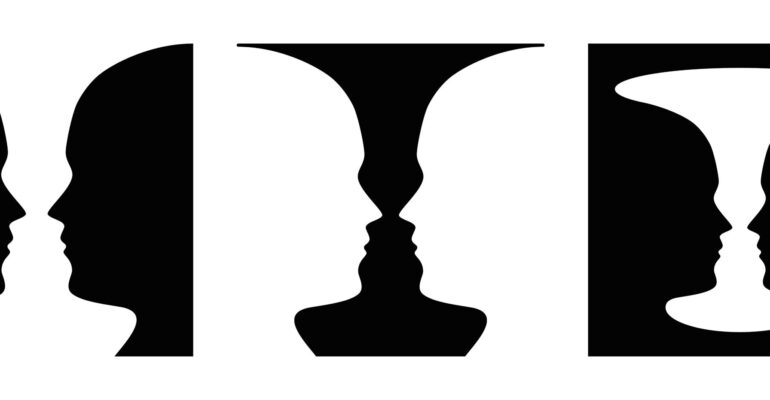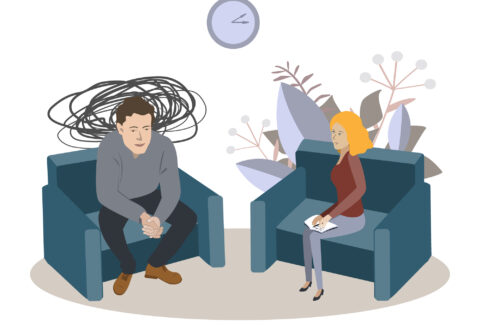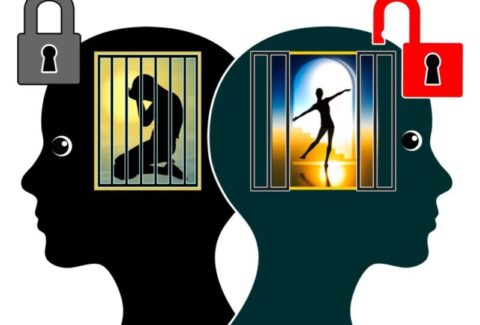Gestalt Therapy: Integrating Thoughts, Feelings, and Actions for Wholeness and Healing

Gestalt Therapy: Integrating Thoughts, Feelings, and Actions for Wholeness and Healing
Gestalt therapy[1], a humanistic and experiential approach to psychotherapy, is founded on the principle that individuals can only achieve wholeness when they integrate their thoughts, feelings, and actions. In this modality, the focus is on present-moment awareness, personal responsibility, and the alignment of all aspects of the self. Unlike traditional approaches that prioritize cognition over emotion or behavior, Gestalt therapy[2] promotes the synthesis of these elements to foster deeper self-understanding and authentic living.
The Core of Gestalt Therapy: A Holistic Approach
At its core, Gestalt therapy[3] emphasizes the idea that the whole is greater than the sum of its parts. This holistic perspective means that a person’s experience cannot be fully understood in isolation but must be viewed in the context of their total being—thoughts, feelings, and actions all interwoven. When these elements are fragmented, individuals may feel stuck, disconnected, or disempowered. However, by encouraging clients to fully engage with their emotions, think critically, and take purposeful action, Gestalt therapy offers a pathway to reintegration and wholeness.
Thoughts: Bringing Awareness to Cognitive Patterns
In Gestalt therapy[4], thoughts are not dismissed or treated as irrelevant, but they are not the sole focus either. The goal is not to change distorted thinking patterns as in cognitive-behavioral therapy (CBT), but to bring awareness to them. Clients are encouraged to notice and articulate their thoughts as they arise in the present moment. This awareness of thinking patterns helps illuminate how certain beliefs, assumptions, or judgments may prevent individuals from living fully in the here and now.[5]
For instance, clients may discover how self-critical thoughts inhibit their ability to take risks or connect authentically with others. By becoming aware of these thoughts and their impact, individuals can begin to challenge and transform them. However, the true power of Gestalt therapy lies not in thinking alone but in integrating these insights with emotion and action.
Feelings: Embracing Emotional Experience
Gestalt therapy places a strong emphasis on emotional experience, viewing feelings as a gateway to understanding oneself and one’s needs.[6] Instead of avoiding or suppressing difficult emotions, clients are encouraged to fully experience them. Emotions provide crucial information about unmet needs, unresolved conflicts, or suppressed desires. In Gestalt therapy, emotional expression is not something to be managed or contained but is an integral part of healing.
Through techniques such as the “empty chair” dialogue or body awareness exercises, clients can safely explore their emotions and learn to express them in ways that feel authentic.[7] By embracing feelings rather than avoiding them, individuals gain a deeper connection to their inner world and a clearer understanding of their motivations.
Actions: Aligning Behavior with Inner Experience
In Gestalt therapy, action is the culmination of insight and emotional awareness. True healing occurs when individuals can translate their thoughts and feelings into meaningful, intentional actions.[8] This is where Gestalt therapy distinguishes itself from purely analytical or emotionally focused therapies—action is seen as a critical component of personal growth.
Gestalt therapists often use role-playing, body movement, and other experiential techniques to help clients embody their insights. This focus on action allows individuals to experiment with new behaviors, challenge habitual patterns, and ultimately bring their thoughts and feelings into alignment with how they act in the world.[9]
For example, a client struggling with assertiveness may engage in a role-play where they practice setting boundaries in a safe therapeutic environment. This action not only reinforces their newfound awareness of their needs but also empowers them to take that awareness into their everyday interactions.
The Power of Present-Moment Awareness
Central to Gestalt therapy is the idea of the “here and now.” This focus on present-moment[10] experience encourages clients to stay grounded in what is happening now rather than being preoccupied with the past or anxious about the future. This awareness is key to integrating thoughts, feelings, and actions. By staying fully present, clients can better recognize how their internal experience manifests in their body and behavior, enabling them to make conscious choices that align with their true selves.[11]
The Gestalt Cycle of Experience: Moving Toward Integration
The Gestalt Cycle of Experience—often described as a flow of sensation, awareness, mobilization, action, contact, and withdrawal—illustrates the process of how individuals move from awareness of a need or desire to the satisfaction of that need through action.[12] At each stage of this cycle, thoughts, feelings, and actions must be in harmony for true fulfillment to occur.
- Sensation: An individual becomes aware of a bodily sensation or emotion, which signals an unmet need.
- Awareness: This sensation leads to awareness of thoughts and feelings associated with the need.
- Mobilization: The person gathers energy and prepares to take action based on the awareness of the need.
- Action: The individual takes purposeful action to meet the need.
- Contact: The person experiences contact with the environment or another person, which satisfies the need.
- Withdrawal: After contact, the person withdraws and reflects on the experience, preparing for the next cycle.
When individuals become stuck at any point in this cycle—perhaps suppressing their feelings, becoming disconnected from their thoughts, or avoiding action—growth is stifled. Gestalt therapy helps restore the natural flow of the cycle by bringing attention to areas of stagnation and encouraging movement toward integration.
The Integration of Thoughts, Feelings, and Actions in Everyday Life
The goal of Gestalt therapy is not just to bring insight or relief within the therapy room but to empower individuals to integrate their thoughts, feelings, and actions in their daily lives. When thoughts, feelings, and actions are aligned, individuals experience a greater sense of authenticity, freedom, and personal power. They are more capable of making choices that reflect their true desires and needs rather than being driven by fear, avoidance, or societal expectations.
For example, a person who has integrated their inner experience may:
- Think: “I deserve to set boundaries to protect my well-being.”
- Feel: Empowered and confident in expressing their needs.
- Act: Assertively communicate their boundaries in personal and professional relationships.
This integration leads to more fulfilling relationships, improved mental and emotional well-being, and a greater sense of control over one’s life.[13]
Conclusion: The Power of Gestalt Therapy
Gestalt therapy offers a transformative path toward personal wholeness by fostering the integration of thoughts, feelings, and actions. By cultivating present-moment awareness and embracing the totality of one’s experience, individuals are empowered to live more authentic, intentional, and fulfilling lives. The true power of Gestalt therapy lies in its holistic approach—by aligning cognition, emotion, and behavior, individuals can break free from patterns that no longer serve them and move toward true growth and healing.
As we continue to face the complexities of modern life, the lessons of Gestalt therapy remind us that wholeness is not achieved by focusing on one aspect of the self but by honoring and integrating all parts of our experience. Through this integration, we can live more fully, connect more deeply, and find greater meaning in both our inner and outer worlds.
[1] Yontef, Gary, and Lynne Jacobs. “Gestalt therapy.” (2005).
[2] Wagner-Moore, Laura E. “Gestalt therapy: past, present, theory, and research.” Psychotherapy: Theory, Research, Practice, Training 41.2 (2004): 180.
[3] Levin, Jay. “Gestalt therapy: Now and for tomorrow.” Gestalt Review 14.2 (2010): 147-170.
[4] Latner, Joel. “The theory of Gestalt therapy.” Gestalt therapy. Gestalt Press, 2014. 19-62.
[5] Maher, Andrew, et al. “The experience and development of awareness in Gestalt therapy training groups: A phenomenological study.” Gestalt Journal of Australia and New Zealand 8.1 (2011): 36-56.
[6] Mermin, Dan. “Gestalt theory of emotion.” The counseling psychologist 4.4 (1974): 15-20.
[7] Kolmannskog, Vikram. The empty chair: Tales from gestalt therapy. Routledge, 2018.
[8] Brownell, Philip. “Contemporary Gestalt therapy.” (2016).
[9] Melnick, Joseph, and Sonia March Nevis. “A GESTALT THERAPY APPROACH.” Handbook of experiential psychotherapy (1998): 428.
[10] Plagens, Cameron M. “The gestalt model of evolutionary creative process.” Gestalt Review 19.2 (2015): 144-161.
[11] Killoran, Carol Ann. A spiritual dimension of Gestalt therapy. Garrett-Evangelical Theological Seminary, 1993.
[12] Brownell, Phillip. “Assimilating/integrative: The case of contemporary gestalt therapy.” Abnormal psychology across the ages 1 (2013): 221-234.
[13] Ellis, Albert. “Can rational-emotive behavior therapy (REBT) and acceptance and commitment therapy (ACT) resolve their differences and be integrated?.” Journal of Rational-Emotive and Cognitive-Behavior Therapy 23 (2005): 153-168.






